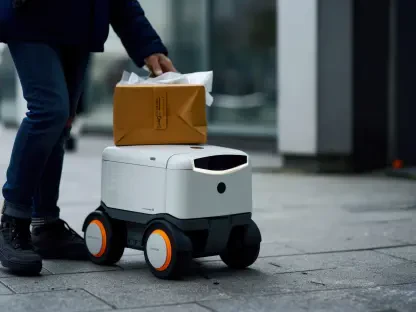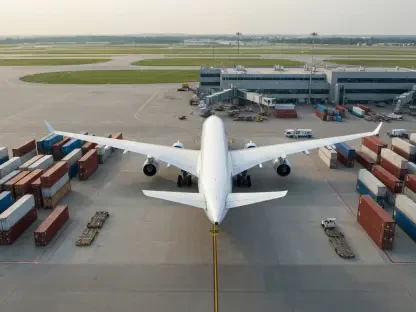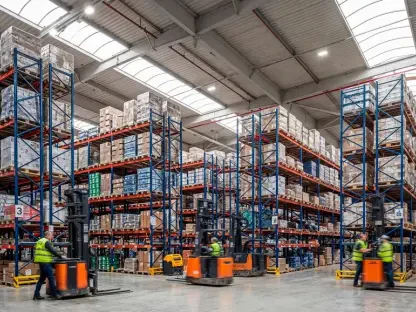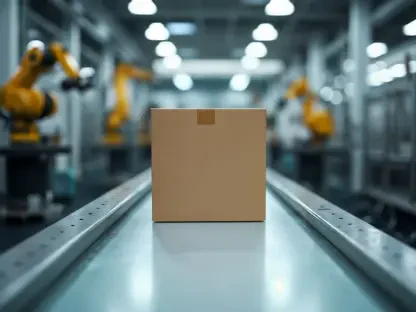Amid intensifying demand for efficient delivery solutions, Amazon is increasingly eyeing the development of humanoid robots as a potential revolution in logistics. This exploration underscores a profound shift in the industry as the e-commerce titan seeks to integrate cutting-edge technology to enhance operational capabilities. The vision of utilizing robots for delivery has been propelled by escalating online shopping trends, especially in the United States, where consumer demand for faster, more reliable services continues to grow. This ambition, however, remains largely speculative, given Amazon’s silence on any official rollout. While substitutions of human couriers with robotic alternatives are not immediate due to software development stages, the prospect is undeniably exciting. As one of the most influential companies worldwide, Amazon’s investment in automation is part of its broader strategy to redefine how goods are delivered. The corporation’s ventures span sectors like entertainment through Prime Video, yet its logistics arm often faces criticism over issues such as incompatible delivery times and mishandled packages.
Amazon’s Technological Ventures in Robotics
Founded by Jeff Bezos, Amazon has consistently strived to be at the forefront of technology integration, with significant financial backing aimed at innovation within its operations. One notable endeavor has been the Vulcan robotic arm, a project equipped with tactile sensors that represent Amazon’s investment in enhancing robotic capabilities. These advancements form part of the company’s annual multi-million euro expenditure aimed at building a more automated delivery ecosystem. Such investments focus on creating units that can manage tasks heretofore reliant on human agility and precision. Reports also indicate that Amazon is in the developmental phase of advanced artificial intelligence software to train humanoid robots. This training occurs within a specially designed “humanoid park,” which simulates real-world delivery scenarios. Aiming to sharpen these robots’ adeptness in navigating complex logistical tasks provides fascinating insight into Amazon’s forward-thinking approach. Although the software remains in its nascent stages and is yet to transition from rudimentary mechanical arms to sophisticated humanoid figures, the vision is taking shape substantially.
Balancing Innovation with Workforce Dynamics
Despite the excitement surrounding humanoid robotics, the looming question of workforce displacement arises, prompting a critical examination of the implications such advancements may have on employment. Amazon has yet to address these concerns head-on, choosing instead to spotlight its commitment to technological progress. The focus is not currently on immediate personnel replacement; rather, it is on the gradual integration of technology within its logistics chain. Nonetheless, there remains a palpable unease among observers and workers concerning potential job losses. These revolutionary technological explorations inevitably lead to a broader dialogue on the evolving landscape of employment and the growing intersection where technology meets human labor. Such considerations invite readers to reflect on the preferred future of delivery services—whether through the convenience and efficiency offered by robotics or the irreplaceable human touch that a physical courier provides.
Future Prospects and Challenges
Amid rising demand for efficient delivery solutions, Amazon is seriously considering developing humanoid robots to revolutionize logistics. This reflects a major shift in the industry as the e-commerce giant aims to leverage cutting-edge technology to boost its operational capabilities. The idea of using robots for delivery has gained momentum due to increasing online shopping trends, especially in the U.S., where there’s a growing consumer demand for quicker and more reliable services. Despite this ambition, the concept remains largely speculative since Amazon has yet to announce any official rollout. Replacing human couriers with robots remains distant due to current software development stages, though the idea is exciting. As a globally influential company, Amazon’s investment in automation aligns with its broader strategy to transform delivery methods. While it also focuses on sectors like entertainment with Prime Video, its logistics arm often faces criticism over issues like inaccurate delivery times and mishandled packages.









